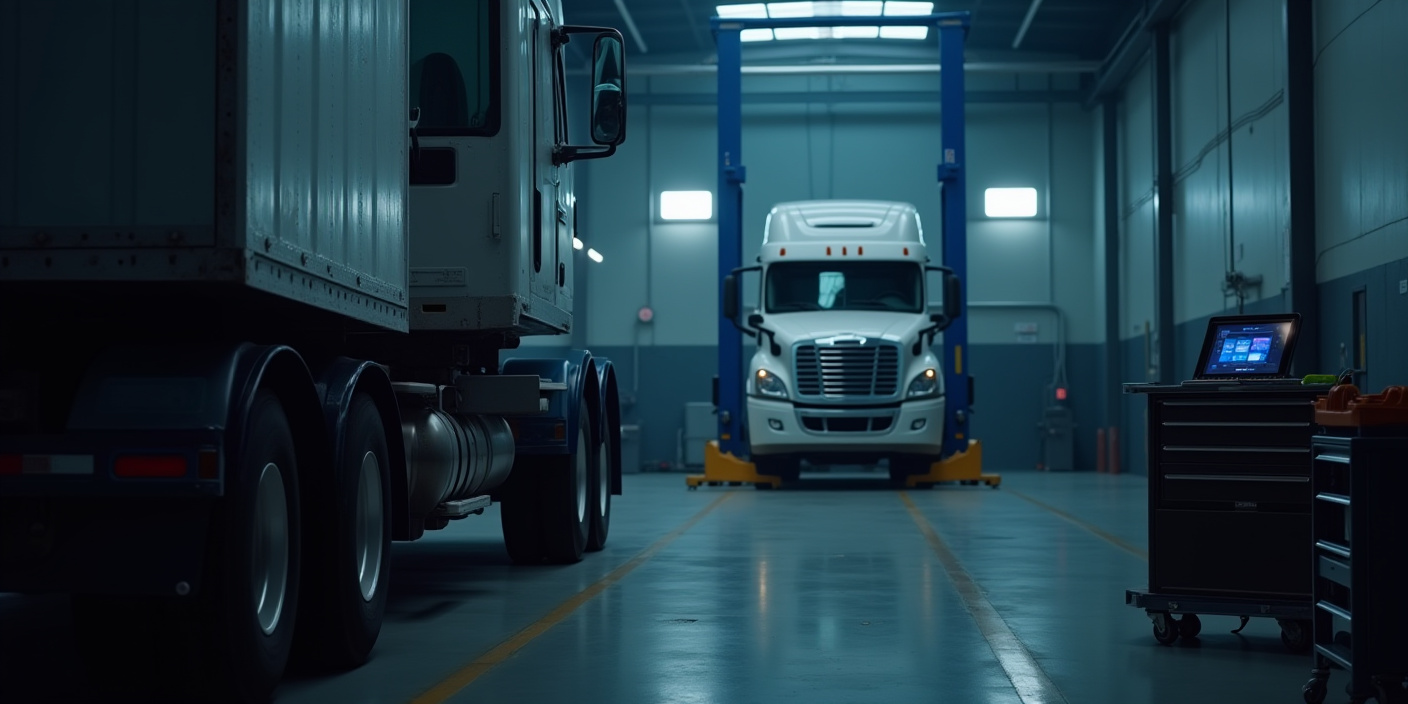Do You Need a Dedicated Parts Manager?
Every growing heavy-duty repair shop eventually hits the same wall: parts chaos.
Technicians waste time chasing missing components. Service managers juggle phone calls to vendors between jobs. Owners spend nights ordering parts because the day is already packed. Meanwhile, bays sit idle, trucks wait, and money slips through the cracks.
For heavy-duty shops working with complex, high-cost components, those delays get expensive fast. A sidelined truck costs fleets $450-$760 per day, and every minute a $100/hr technician isn’t wrenching is profit walking out the door.
The solution many shops overlook? Hiring a dedicated parts and inventory manager - supported by the right SaaS tools. For shops with 5+ techs or multiple bays, this single change can unlock tens of thousands of dollars in monthly revenue, cut downtime, and make scheduling predictable again.
Signs It’s Time to Hire a Parts Manager
How do you know your shop has reached that tipping point? Here are some clear indicators:
1. Techs Are Constantly Waiting on Parts
When mechanics frequently pop into the office asking “Did that turbo come in yet?” it’s a sign your workflow is bottlenecked. Every idle bay equals lost revenue. Multiply one or two stalled jobs per day across your team, and the cost stacks up quickly.
2. The Owner or Shop Manager Is Still Doing All the Ordering
Many shop owners personally handle 80% of parts orders. It works - until it doesn’t. Once you’re running 3-4 techs or more, industry benchmarks say support staff (including parts) becomes critical. If you’re working 70+ hour weeks just to keep up, you’re wearing too many hats.
3. Paperwork Is Piling Up
Clipboards full of unfinished repair orders, parts lists scattered across desks, and unpaid invoices waiting for clarification - these are all red flags. One shop owner admitted to writing 11 ROs per day solo: “It’s not sustainable.” If parts paperwork is lagging behind wrench work, you’re losing money.
4. Frequent Billing Errors or Rework
Misplaced or misbilled parts are silent profit leaks. Forgetting a $300 component on an invoice or ordering the wrong part creates rework, return delays, and unhappy customers. A dedicated parts manager tracks usage, double-checks invoices, and keeps inventory reconciled to avoid costly mistakes.
5. Technicians Are Doing Admin Work
If your techs spend more than 30 minutes a day doing anything other than repairs - like looking up part numbers, making calls, or waiting for deliveries - it’s time. Those lost wrench hours can equal $5,000-$15,000/month in lost billable time depending on your team size.
👉 Self-check: Are techs waiting, owners burning out, or work orders lagging? If yes, your shop has outgrown ad-hoc parts management.
What a Dedicated Parts Manager Actually Does
Think of the parts manager as the “quarterback” of your shop’s repair flow. Their job isn’t just to order parts; it’s to keep technicians working and bays turning over. Here’s how:
Proactive Ordering & Staging
Instead of scrambling when a truck rolls in, a good parts manager analyzes work orders ahead of time, requests quotes, places orders, and stages parts so they’re ready when the vehicle arrives.
With proper software, this process takes minutes, not hours. Jobs that might have sat for days waiting on a missing O-ring can be completed same-day. Common parts - filters, belts, gaskets - are stocked based on historical demand, not guesswork.
Real-Time Inventory Control
The parts manager controls one of the biggest expenses in the shop. Their responsibilities include:
- Running cycle counts and reconciling stock regularly
- Managing cores, returns, and cross-references
- Setting reorder points to avoid both overstocking and stockouts
Modern SaaS systems like ShopView make this easy with automated alerts and purchase order generation. Instead of guessing what’s in stock, the parts manager sees it in real time.
Keeping Technicians Wrenching
Every time a tech has to stop work to find or request a part, the shop loses revenue. A streamlined parts workflow can free up 1.5 hours of wrench time per tech per day. At $100/hr, that’s $150 per tech per day, or roughly $5,200/month for a team of 4.
Multiply that by 12 months, and you’re looking at six figures in recovered labor annually - just by letting techs focus on turning wrenches, not chasing parts.
Better Supplier & Customer Communication
The parts manager owns vendor relationships, speeding up quotes and deliveries by working multiple suppliers simultaneously. Digital systems can automatically notify customers when parts arrive or jobs are approved, improving transparency and customer satisfaction.
The ROI of Hiring a Parts Manager
Dedicating a person to parts might sound like a cost, but in most shops it’s a fast-returning investment. Here’s what the data shows:
- Recovered Billable Time: Shops using digital parts workflows report reclaiming ~$100K/year in billable work previously lost to delays.
- Reduced Downtime: Faster parts procurement cuts expensive truck downtime ($448-$760/day).
- Higher Throughput: Offloading admin increases jobs per tech by ~20%. One shop boosted sales by $20K/month just by adding proper support staff.
- Efficiency per Bay: Clean parts workflows improve scheduling accuracy, reduce idle bays, and boost profit per bay.
Many shops see these gains within 60-90 days of hiring and equipping a parts manager with modern tools.
Why SaaS Tools Make the Difference
A great parts manager is powerful. A great parts manager with the right software is transformational.
Real-Time Inventory & Ordering
With ShopView, parts managers see exact stock levels across locations in real time. Low-stock alerts trigger automatically, and POs can be created with one click. No more guessing, no more surprises.
Telematics & Fleet Integration
ShopView integrates with Samsara, Geotab, and other telematics systems. When a fault code hits (say, a brake wear alert), a work order auto-generates and the parts manager is notified instantly. Parts can be pre-pulled and staged before the truck arrives, cutting downtime to near zero.
Compliance & DVIR Integration
Heavy-duty shops deal with DOT, DVIR, and IFTA compliance daily. ShopView links DVIR defects directly to work orders and tracks documentation automatically, saving hours of manual work. Multi-location dashboards give you visibility across all shops.
Scalable, Always Up-to-Date
Unlike old on-premise systems, cloud SaaS updates continuously - no patches, no IT headaches. Industry data suggests only ~20% of heavy-duty shops use modern SaaS today, but adoption is projected to hit 50-60% by 2030. Early adopters are already pulling ahead.
And at ~$50 per user per month, the cost is negligible compared to the revenue reclaimed through better efficiency and reduced downtime.
When to Pull the Trigger
So when should a shop make the move? As a rule of thumb:
- 3-4 techs: Start planning for a parts role and software.
- 5+ techs or multiple bays: It’s time. The ROI is almost always positive within months.
- Multiple locations or fleet-heavy work: A dedicated parts manager + SaaS is essential to stay competitive.
If your shop is stuck in “organized chaos” mode, hiring a parts manager is often the single most impactful operational upgrade you can make.
Conclusion: Stop Letting Parts Bottlenecks Bleed Your Profits
Every hour techs wait on parts is an hour of lost revenue. Every disorganized order or billing error chips away at margins. For growing heavy-duty shops, a dedicated parts manager isn’t a luxury - it’s a force multiplier.
Combine that role with a connected SaaS platform like ShopView, and you can:
- Keep bays turning with no delays
- Cut admin overhead and downtime
- Increase profit per bay
- Scale your operations with confidence
👉 Book a free ShopView demo and see how real-time inventory, telematics integration, and automated parts workflows can transform your shop. Or try our ROI Calculator to see how much billable time you could recover this year.
.png?width=1500&height=1500&name=11%20(1).png)








.png?width=1500&height=1500&name=1%20(1).png)

%20-%20Copy.png?width=1500&height=1500&name=2%20(1)%20-%20Copy.png)




